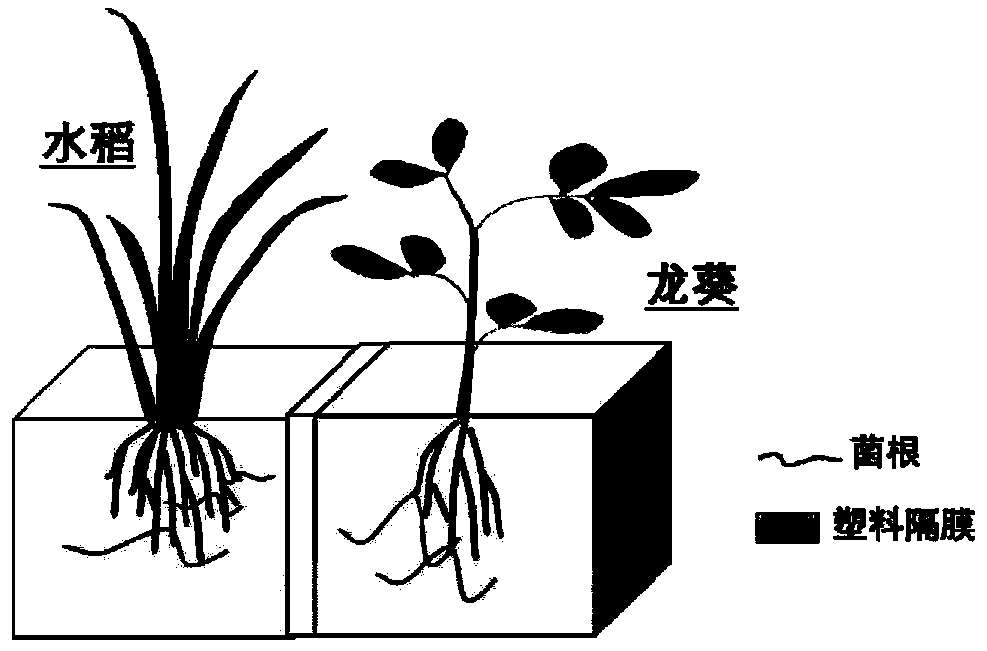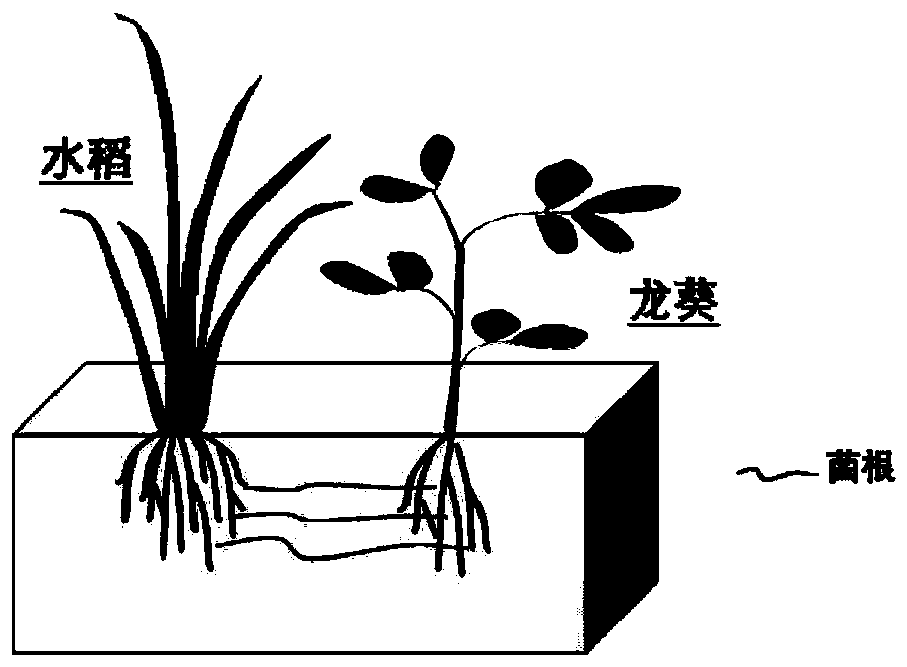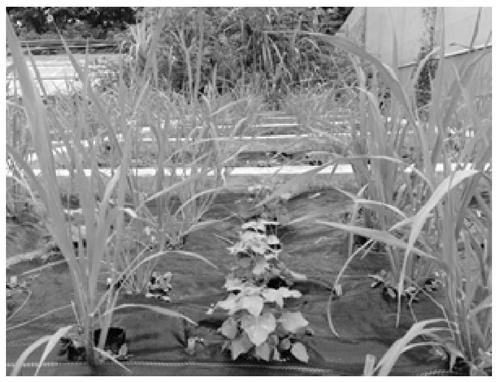Method for repairing glomus mosseae-contaminated soil through combination of glomus mosseae and nightshade-rice intercropping system
A technology for Glomus mosesi and cadmium-contaminated soil, applied in the field of phytoremediation, can solve the problems of high cost of remediation technology, difficult production practice, and long repair period, so as to improve the ability of absorbing and enriching cadmium, good repair effect, The effect of shortening the repair cycle
- Summary
- Abstract
- Description
- Claims
- Application Information
AI Technical Summary
Problems solved by technology
Method used
Image
Examples
Embodiment 1
[0048] Embodiment 1 Moses' balloon mold preparation
[0049] The arbuscular mycorrhizal fungus Glomus mosseae was provided by the Agricultural College of Guangxi University. In the present invention, corn (zea mays) is used as a host plant for potted propagation, and the mixture containing host plant root segments, fungal hyphae, mycorrhizal fungal spores and potted sand is used as an inoculant.
[0050] Concrete preparation process is as follows:
[0051] S11. according to the inoculum amount of 3% by mass ratio, the arbuscular mycorrhizal fungus seed agent is placed in the 2 / 3 position of the aseptic basin with sterilized sand;
[0052] S12. Corn seeds with 10% H 2 o 2 Disinfect for 15-20 minutes, and soak the seeds for 12 hours; sow 10-15 corn seeds in each pot, cover with sterilized sand medium, and cultivate in the greenhouse;
[0053] The indoor temperature of the greenhouse is kept at 20-32° C., and the humidity is kept at 65%-75%.
[0054] S13. Cultivate potted pl...
Embodiment 2
[0057] Embodiment 2 Utilizes the method for joint restoration of cadmium-contaminated soil by Glomus mosesi and Solanum nigrum-rice intercropping system
[0058] 1. Experimental materials
[0059] (1) Solanum nigrum and upland rice as test plants
[0060] The test plant Solanum nigrum L. was sprayed with 10% H before sowing 2 o 2 Disinfect for 15-20 minutes, wash with deionized water, and then wash with 0.1% H 2 o 2 Soak the seeds for 12h. After soaking the seeds, spread the expanded seeds evenly in the sterilized quartz sand, and place them in a constant temperature incubator for cultivation. The test plant upland rice (Oryza sativa L.) was sprayed with 10% H before sowing 2 o 2 Sterilize for 15-20 minutes, wash with deionized water, soak the seeds in deionized warm water at 40-50°C for 10-12 hours, and after the seeds are white, sprinkle the seeds evenly in the sterilized quartz sand and place them in a constant temperature incubator nourish. The setting of the incu...
Embodiment 3
[0105] Embodiment 3 utilizes Glomus mosesi and Solanum nigrum-rice intercropping system to jointly remediate the method of cadmium-contaminated soil
[0106] The method for utilizing Glomus mosesi and Solanum nigrum-rice intercropping system to jointly restore cadmium-contaminated soil provided by the present embodiment comprises the following steps:
[0107] S1. Propagation and preparation of Moses balloon mold agent:
[0108] S11. According to the inoculum size of 1% according to the mass ratio, the Glomus moses strain agent is placed in the 4 / 5 position of the aseptic basin that the sterilized sand medium is housed;
[0109] S12. Sterilize the corn seeds for 15 minutes, soak the seeds for 10 hours, cover with sterilized sand medium, and cultivate them in a greenhouse where the indoor temperature is kept at 20° C. and the humidity is kept between 65%; the sand medium in S11 and S12 is fine River sand, the fine river sand is river sand passed through a 40-mesh sieve;
[011...
PUM
 Login to View More
Login to View More Abstract
Description
Claims
Application Information
 Login to View More
Login to View More - R&D
- Intellectual Property
- Life Sciences
- Materials
- Tech Scout
- Unparalleled Data Quality
- Higher Quality Content
- 60% Fewer Hallucinations
Browse by: Latest US Patents, China's latest patents, Technical Efficacy Thesaurus, Application Domain, Technology Topic, Popular Technical Reports.
© 2025 PatSnap. All rights reserved.Legal|Privacy policy|Modern Slavery Act Transparency Statement|Sitemap|About US| Contact US: help@patsnap.com



